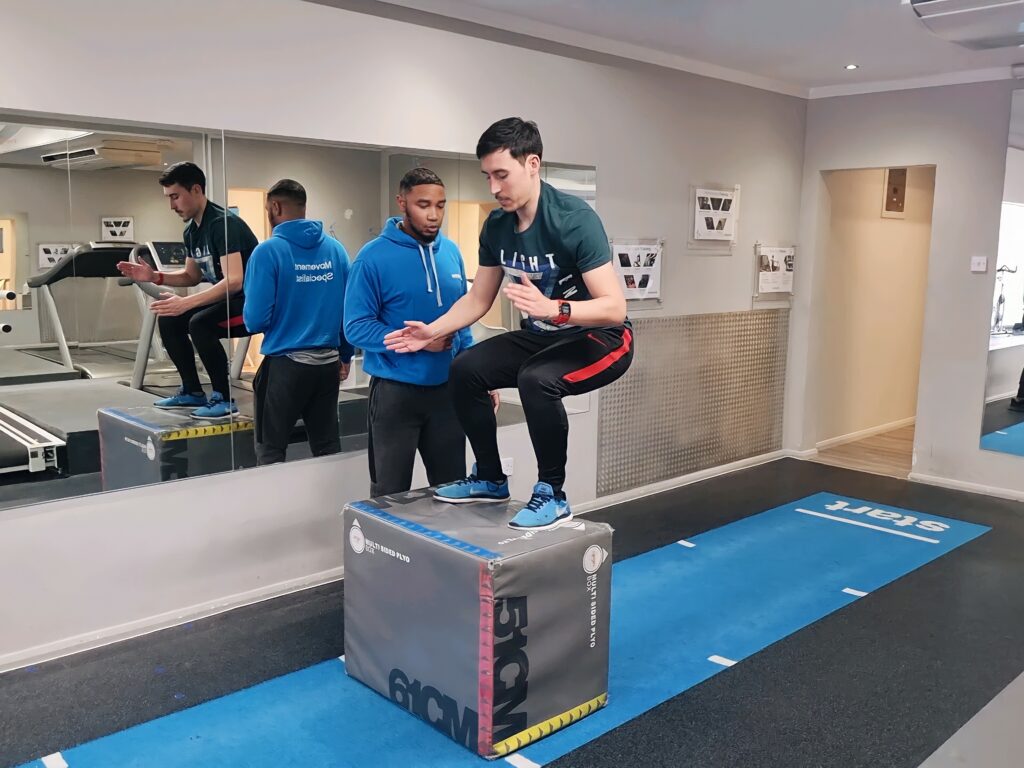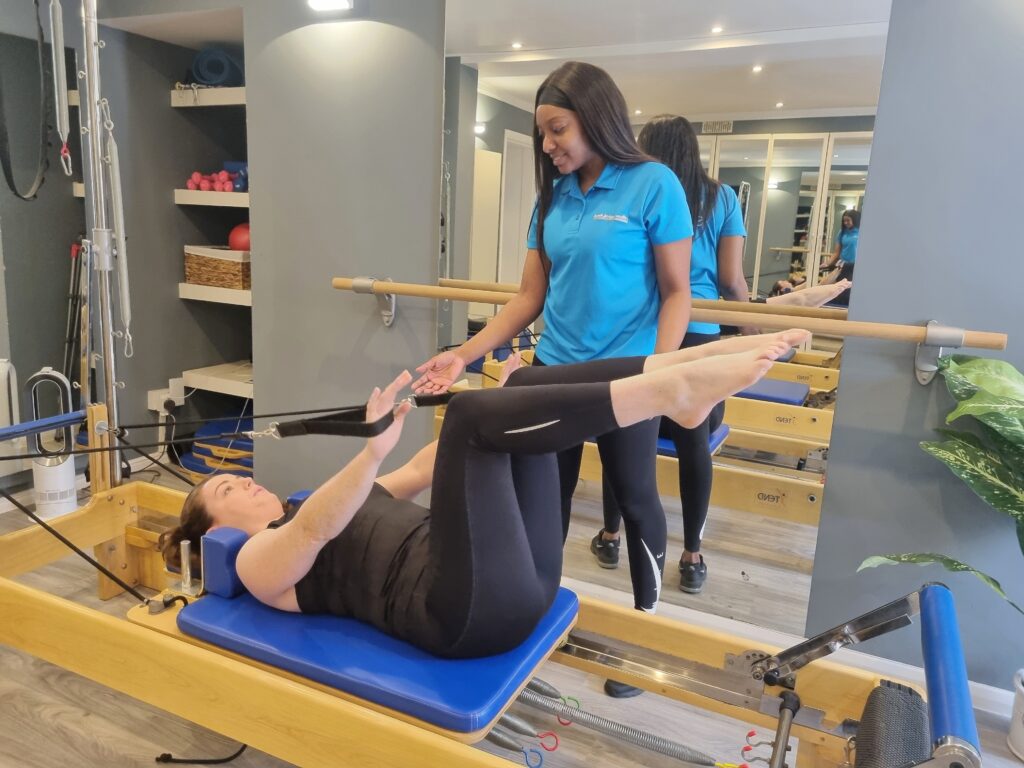LONDON WAYFARERS HOCKEY CLUB: INJURY MANAGEMENT
INTRODUCTION
WELCOME TO YOUR FIRST STEP IN IMPROVING YOUR SPORTING PERFORMANCE.
If you have been directed to this page you are a London Wayfarer Hockey Club player. Hopefully you are not here because you are injured but because you are keen to understand more about avoiding the common injuries that hockey players can sustain.
This resource is designed to help hockey players develop their foundation which is important for injury prevention and to allow the best results from any performance development training you may be undertaking, now or in the future. It is hugely important for hockey players to develop their athletic ability to enable their bodies to move efficiently and adapt to training stresses. We are keen to keep you playing your hockey this season and reduce the risk of injury.

AIM
The goal here is to build stronger hockey players, who are more durable, move efficiently and are therefore less likely to sustain injuries. You enjoy your sport, generally it is about the matches, however training to stay fit is the key for every player to be prepared for match day. Injuries are an unavoidable part of any sport however there is plenty that can be done to reduce the injury risks, and this is the main purpose for you here.
We have looked at the most common reasons for hockey player injuries, generally ankles and knees along with hamstrings, groins and back problems are the most common, and analysed the driving forces behind those injuries, hip and back control and movement patterns. As a result of this information we have put together an individualised retraining programme to help you improve your movement patterns and reduce your injury risks. Yes the focus is on the hip and back however they play a major role in hockey player injuries affecting not only the hip and back regions but also the landing pattern and so knee, foot, shin and other ankle and tendinopathy issues too.

OUR PROGRAMME
Review your current movement patterns, following the video and you will fall into one of 3 areas of movement;
HIP FLEXION (BENDING) CONTROL ISSUES
BACK FLEXION (BENDING) CONTROL
INJURY PREVENTION TRAINING
STRENGTH
It is important to build strong muscles, we all understand this concept however muscles work in many different ways and it is important to address these in a structured way.
The concept here is to help develop tissue tolerance for the athlete. Tissue tolerance development takes time and builds through training, gym, running however the essential element for hockey is that it is a 360 degree sport. You work you body through all angles and stresses, and it is important you can do that effectively.
STABILITY
You need more than just strong muscles as an athlete. The muscles need to work together to control rotational forces placed on the body during the course of training & matches. Hockey has a huge rotational force on the body due to the change of direction, acceleration and deceleration, essentially for large parts it is a single leg sport and control here is hugely important.
If we can improve how the muscles work together this opens up performance improvement opportunities.
MOBILITY
In the modern world our habitual postures have a huge effect on our movement patterns. Creating good mobility is essential, especially around the hip region with all the sitting we tend to do each day. Completing a good stretching routine as part of your training programme has huge benefits to you as a hockey player. The best to consider are hip flexors, quads, hamstrings, piriformis, adductors,calves and general ankle & hip joint mobility.
Effective management is important to help prevent overloading of tissues and therefore potential injury issues.
TECHNIQUE
Hockey is a hugely technical sport, an area that will be addressed primarily by your coaches during training. However it is important to remember that to execute a skill effectively requires a combination of good movement control, strength and mobility. If any of these factors are lacking then your skill levels will not be at their maximum and your injury risks increase as your body finds a way to complete the task you are challenging it with.
Body Logic Health offer running video analysis and movement screening to help you identify issues related to specific injury concerns or feel your performance is being affected by external factors. This can help you get on the road to recovery and improved sporting performance.
STAMINA
This is a hugely important area for every hockey player and is a key element in injury prevention. Obviously this is an area you will work on, and London Wayfarer Hockey Club have a wonderful training programme set up to help you develop your stamina, prepare for matches and develop your technical skills. It is important for all players to mix their personal training with the club sessions to maximise their potential. This will include speed training, strength work and running for endurance during their training week, this decreases time spent on the ground and improves dynamic strength, as well as developing your cardiovascular capacity.
Develop stamina as part of your injury prevention programme. Should you need further assistance we are here to help you.
LONDON WAYFARERS HOCKEY CLUB OFFERS
Running Video Analysis
(45 Minutes)
Normally – £55
London Wayfarer Hockey Club Offer – £40.00
USE CODE
UNDERSTAND YOUR MOVEMENT PATTERN
IN THIS SECTION YOU WILL FIND THE ASSESSMENT VIDEO.
This is the key video for the prevention programme to work effectively. Understanding how you move and where your weaknesses lie so you can address them and change excessive stress at one level into even load across your body. In turn improved movement will help reduce your injury risks.
Build a Stronger Hockey Player
HIP FLEXION CONTROL ISSUES
IN THIS SECTION YOU WILL FIND THE RETRAINING EXERCISES FOR THE HIP FLEXION CONTROL ISSUES.
So you have identified that when you bend forwards you tend to move predominantly at your hips, with your low back remaining relatively flat. In the following videos you will find the four key exercises to help improve your low back range of movement and hip muscle activation. It will take you between 6-8 weeks to improve your movement patterns here, particularly if you sit at a desk all day, therefore you need to focus on a good routine that you can complete at least three times a week for the best results. It would also be beneficial to work on your hip flexor and quad flexibility to, so get your stretching routine right along side this programme.
BACK FLEXION CONTROL ISSUES
IN THIS SECTION YOU WILL FIND THE RETRAINING EXERCISES FOR BACK FLEXION CONTROL ISSUES.
So you have identified that you tend to move predominantly in your low back when bending in standing, with your hips remaining relatively still through the movement. In the following videos you will find the four key exercises to help improve your hip range of movement and low back muscle activation. It will take you between 6-8 weeks to improve your movement patterns here, particularly if you sit at a desk all day, therefore you need to focus on a good routine that you can complete about three times a week for the best results. It would also be beneficial to work on your gluts / piriformis and hamstring flexibility too, so get your stretching routine right along side this programme.
UNDERSTAND YOUR MOVEMENT PATTERN
IN THIS SECTION YOU WILL FIND THE RETRAINING TO MAINTAIN GOOD HIP & BACK STRENGTH.
You fall into the lucky group of hockey players who currently have good hip and back movement, which is brilliant news. So here we have combined the toughest exercises from both retraining programmes to help you maintain your good hip & back strength and stability. Too often, we see over time, that our habitual postures change and adapt to our movement patterns. This is your chance to use the programme to maintain good movement control around your hips and back to reduce any adaptions the body may make over time. This would be a great programme to work into your post run training or gym sessions once or twice a week to help you stay strong and improve your performance.
Stay strong for long term benefits
WHAT NEXT?
WHAT NEXT FOR YOUR INJURY MANAGEMENT?
If you have found that the hip & back training has helped your movement patterns and possibly even your speed then it would be sensible to incorporate this training into your weekly routine. The problem with habitual postural changes is you have to keep working on the maintenance side to obtain the best long term results. Too many sportspeople focus on pain alone and when this settles stop the training and revert back to old habits, not surprisingly problems return.
If you enjoy your hockey then keep up the good work to allow you to enjoy and maximise your potential.
If your problem has not resolved or you are still experiencing issues then it is a great idea to review your current movement patterns. Body Logic Health have a great team of movement specialists that can help you identify movement faults to understand how you move and the issues that can be addressed to move better and run better. Build A Better Hockey Player.
Ready to start your recovery?
Get in touch with us now
Have a question?
Wondering how we can help you? Give us a call and one of our expert team will be happy to answer all your questions!
Ready to book?
You can book your appointment online by clicking below. If you’d prefer to talk first you can call us on 020 7924 6068 or email battersea@body-logic.co.uk